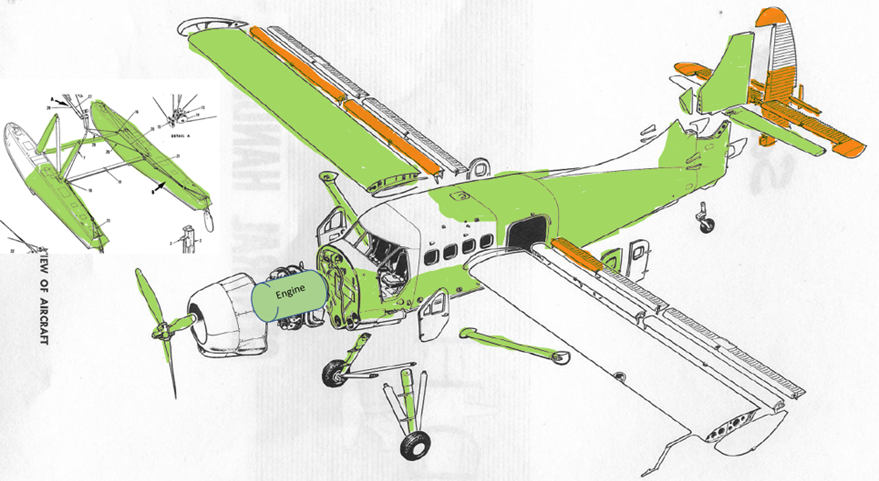Investigative Update Issued
WASHINGTON (Oct. 24, 2022) — National Transportation Safety Board investigators identified a possible safety issue with a flight control of the De Havilland Canada DHC-3 that crashed into Mutiny Bay, Washington on Sept. 4, 2022. The pilot and nine passengers were fatally injured.
Investigators found the horizontal stabilizer actuator, which is part of the airplane’s pitch trim control system and is also referred to as the trim jack, had separated into two pieces. The actuator was found separated where the clamp nut threads into the barrel section. Examination of the threads inside the barrel and the threads on the clamp nut revealed that the two components separated by unthreading as opposed to being pulled apart in tension. A circular wire lock ring is used to prevent the barrel and clamp nut from unthreading. The lock ring was not yet located in the wreckage. This possible safety issue could result in a possible loss of airplane control.
At this time, the NTSB does not know whether the lock ring was installed before the airplane impacted the water or why the lock ring was not present during the airplane examination. The NTSB, in coordination with the Transportation Safety Board of Canada, has asked that the manufacturer draft instructions for an inspection of the actuator to ensure that the lock ring is in place and properly engaged to prevent unthreading of the clamp nut. Those instructions will be released and provided to all operators of the DHC-3 airplane worldwide in a Service Letter.
 Recovered wreckage highlighted in green. Recovered flight controls highlighted in orange. (Source: NTSB)
Recovered wreckage highlighted in green. Recovered flight controls highlighted in orange. (Source: NTSB)
The investigation into this accident will continue with examinations of both elevators in the NTSB Materials Laboratory; interviews of the FAA principal operations and principal maintenance inspectors assigned to the operator; a review of maintenance records, including historical records for accidents, incidents and service difficulty reports and interviews with maintenance personnel. An evaluation of lock ring failure modes and lock ring installation instructions will be accomplished in addition to an aircraft performance study.
The wreckage recovery operation was completed on September 30 with approximately 85% of the airplane recovered from the sea floor. A field examination of the wreckage occurred during the week of October 3, with follow-up activities in the NTSB Materials Laboratory in Washington, D.C. The horizontal stabilizer actuator and both elevators were shipped to the NTSB Materials Laboratory for further examination.
All aspects of the crash remain under investigation while the NTSB determines the probable cause, with the intent of issuing safety recommendations to prevent similar crashes. The information in the update is preliminary and subject to change as the investigation continues.
The full investigative update can be found on the investigation webpage.
To report an incident/accident or if you are a public safety agency, please call 1-844-373-9922 or 202-314-6290 to speak to a Watch Officer at the NTSB Response Operations Center (ROC) in Washington, DC (24/7).